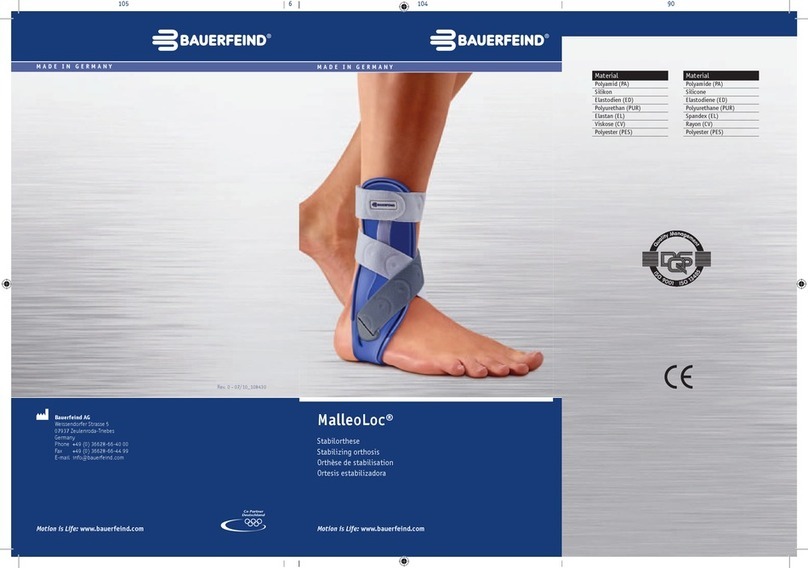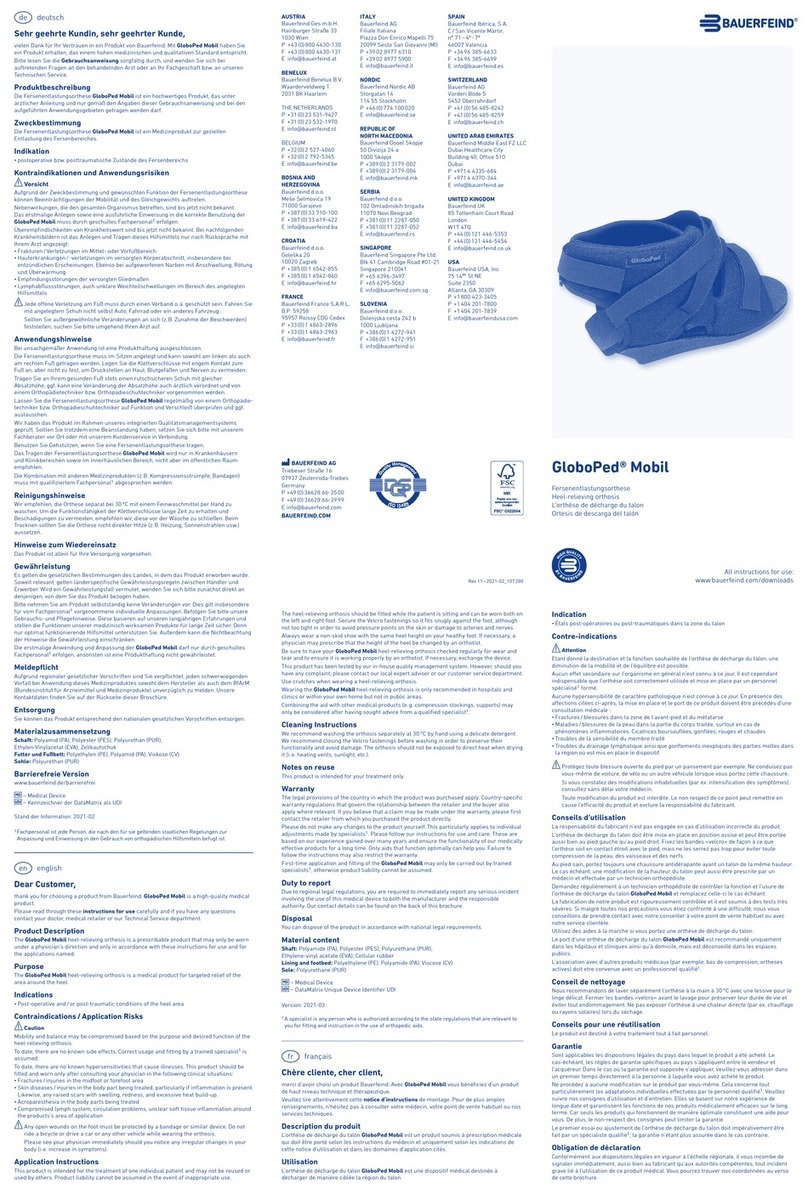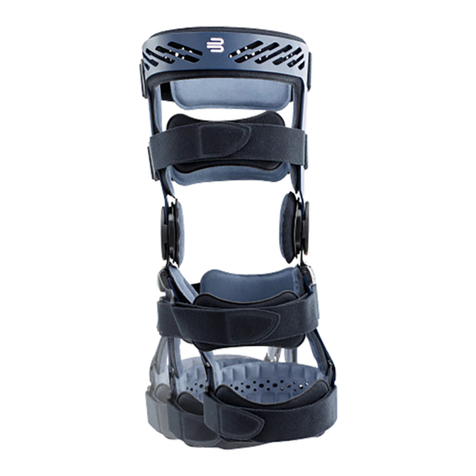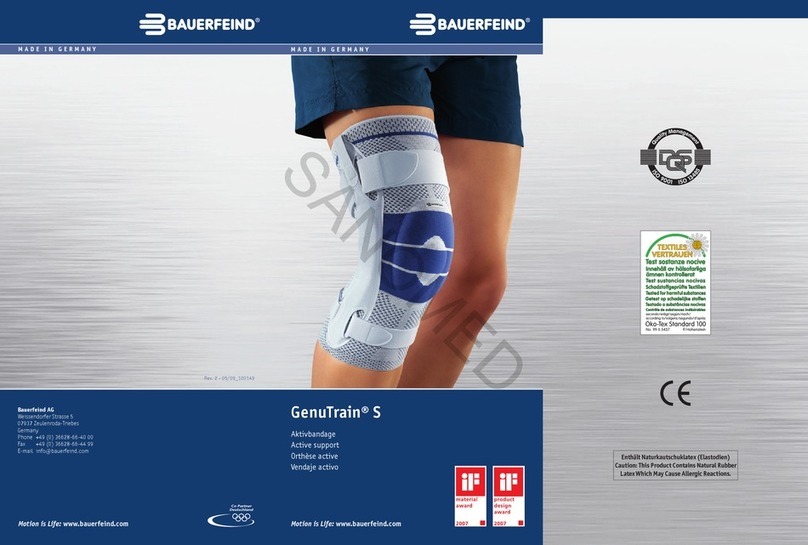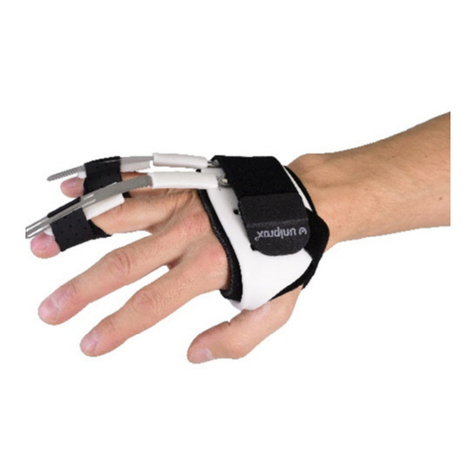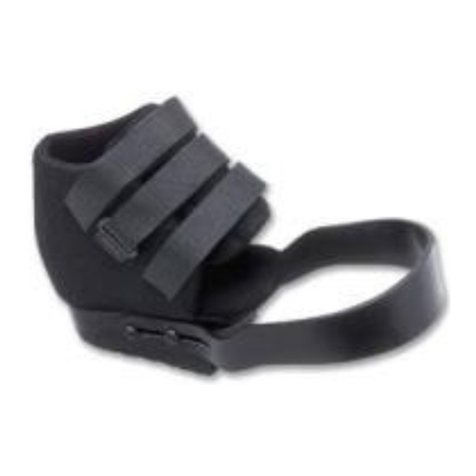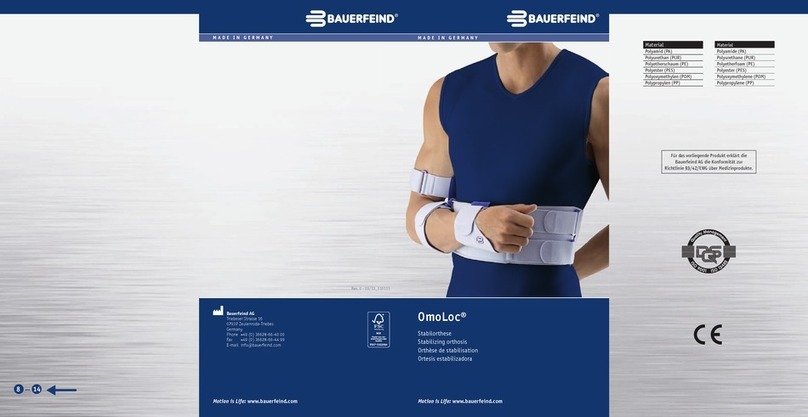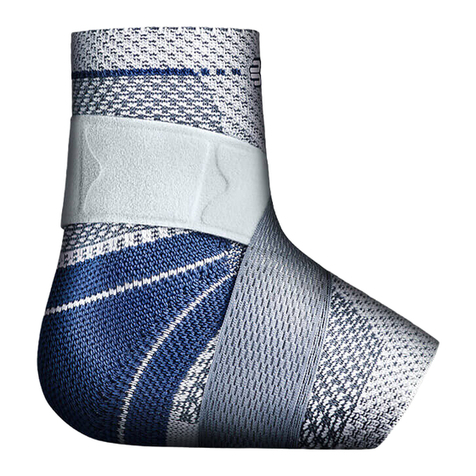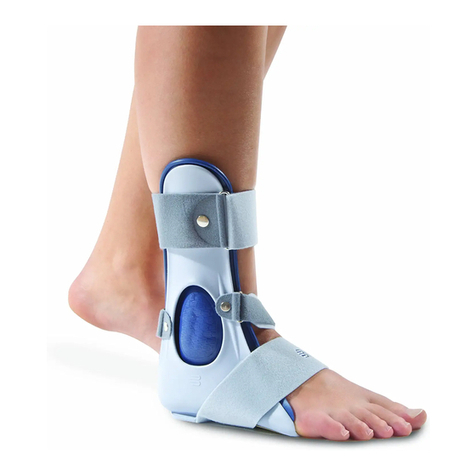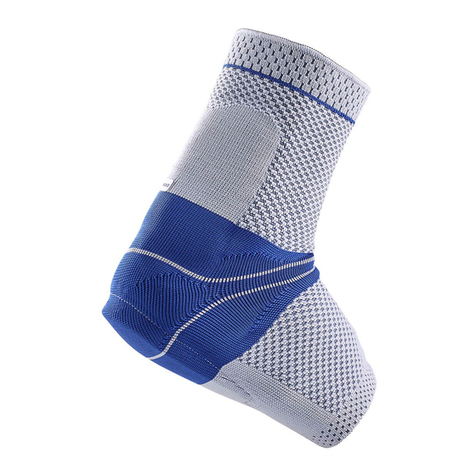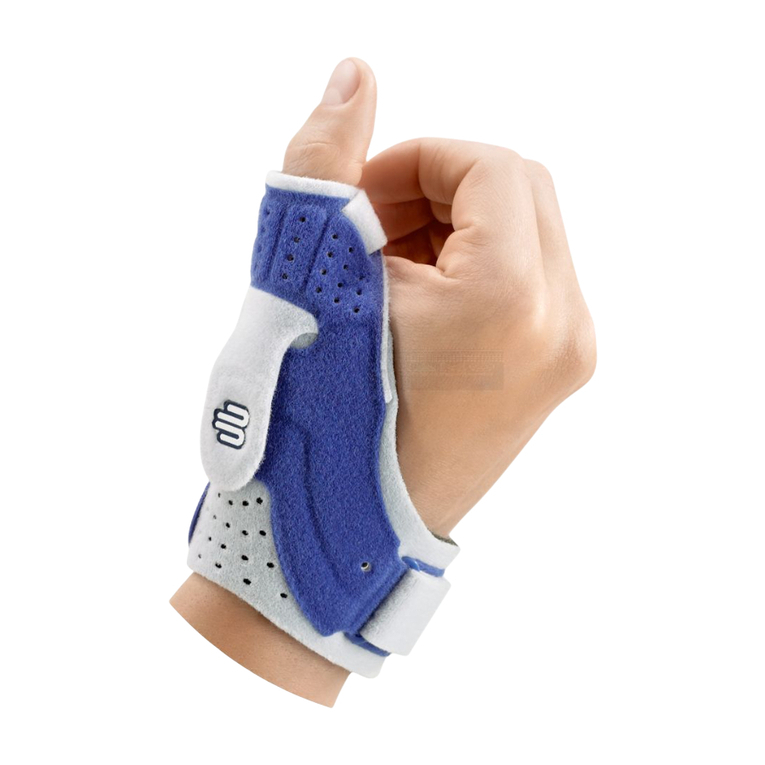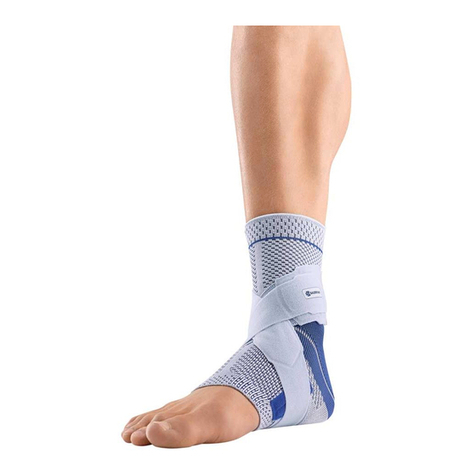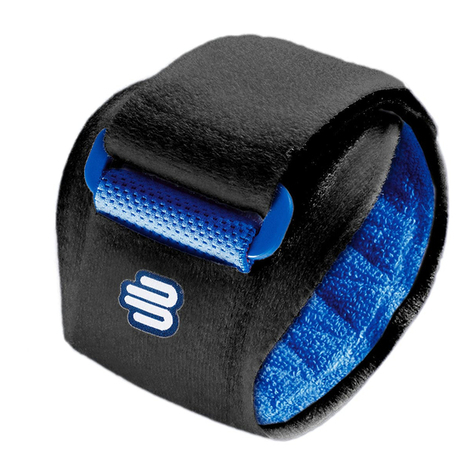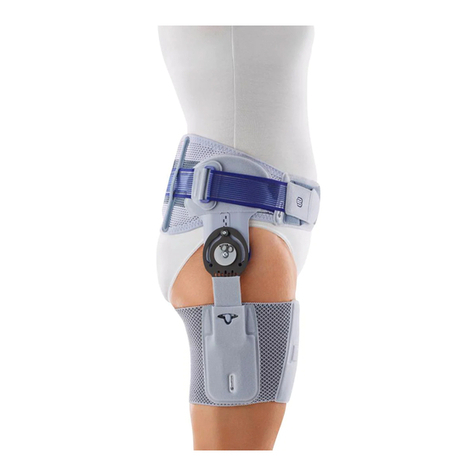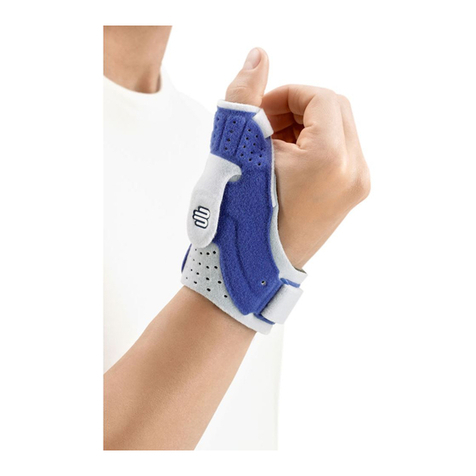5. General safety instructions
•This medical device is designed for single patient, multiple use.
•Fitting/service of this medical device is only allowed by a certificated orthopedic
professional.
•The professional should instruct the correct use of the device to the user.
•The joint must be protected against dust, moisture, aggressive media, and mechanical
forces so its function is not affected.
•The joint is intended for use at temperatures from -10°C to 50°C.
•Do not longer use the knee joint if its function is impaired. This may be due to stiffness,
restricted extension, noise generation, faulty swing phase control or stance phase safety,
as well as impact from an external force (for example, if dropped). In such cases, it must
be checked by a professional and, if necessary, sent to Uniprox GmbH & Co.KG.
•There is a risk of jamming when the joint is in use.
•The product must not be changed or applied in any improper way. Non-compliance can
impair the function of the product and thus no liability will be accepted.
•The safety of the user is not guaranteed if the product is not used for its intended purpose.
This will also terminate the warranty of the product.
•Joint components may heat up slightly during walking.
•Silicone spray should be used to prevent noises being generated by contact between the
cosmetic foam and knee joint. Do not use Talcum powder as it removes lubricant from the
bearings and may lead to impaired function as a result.
•Avoid loading onto the prosthetic knee joint in the maximum flexed position.
•In case of maximum flexion, posterior part of the socket or other components may hit and
damage the knee device and the socket (Fig. 1-a). If it is inevitable, place a soft pad
between socket and the knee for shock reduction (Fig. 1-b) and make a new hitting point
to distal part of the knee to reduce moment force (Fig. 1-c).
•When the knee joint is bent, never put hands around the device.
•Insertion of fingers between knee components or the knee device and another prosthetic
component could cause severe injury such as laceration or fracture.
•This instruction should be given to users as well.
5
6. Construction and installation instructions
6.1 Static construction
The weight bearing line (load line) should run through the center of the front, top axis and the
lower connecting axis of the hydraulic cylinder (pic.2).
6.2 Dynamic adjustment
6.2.1 Adjustment of the axes position
To reduce the knee safety, the JT30
can be tilted forward. So the initial
rotation point moves anteriorly and
the knee can be bent easily.
At the same time the bouncing effect
is reduced. (pic. 3A)
To increase the knee safety the JT30
can be tilted backwards. So the initial
rotation point is located more posteriorly.
Therefore it becomes harder to bend the joint.
The bouncing-effect increases. (pic. 3B)
weight bearing line
front upper axis
lower axis of the hydraulic
cylinder
weight bearing line
4

